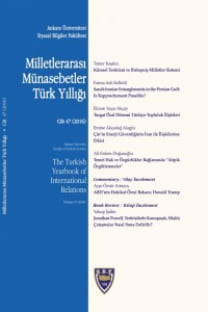The Foreign Policy Doctrine of the Holy See in the Cold War Europe: Ostpolitik of the Holy See
This article deals with the foreign policy of the Holy See during the pontificates of Pope John XXIII and Paul VI which is known as the Ostpolitik of the Holy See. The Ostpolitik signifies the policy of opening the dialog with the communist governments of the Eastern and Central Europe during the Cold War. The article analyzes the factors that influenced it, its main actors and developments, as well as relations of the Holy See with particular countries. It argues that, despite its shortcomings, the Ostpolitik did rise the Holy See’s profile on the international scene and helped preservation of the Catholic Church in the communist Eastern and Central Europe.
Anahtar Kelimeler:
The Holy See, Ostpolitik, the Cold War, foreign policy, Eastern Europe
The Foreign Policy Doctrine of the Holy See in the Cold War Europe: Ostpolitik of the Holy See
This article deals with the foreign policy of the Holy See during the pontificates of Pope John XXIII and Paul VI which is known as the Ostpolitik of the Holy See. The Ostpolitik signifies the policy of opening the dialog with the communist governments of the Eastern and Central Europe during the Cold War. The article analyzes the factors that influenced it, its main actors and developments, as well as relations of the Holy See with particular countries. It argues that, despite its shortcomings, the Ostpolitik did rise the Holy See’s profile on the international scene and helped preservation of the Catholic Church in the communist Eastern and Central Europe.
Keywords:
ostpolitik, Foreign Policy, the Holy See,
___
- Referans 1 Bajc, G. 2014. Dietro le quinte della visita di Tito a Roma nel 1971: il contest locale e internazionale letto dalla diplomazia Britannica. Annales: Annals for Istrian and Mediterranean Studies. Series Historia et Sociologia 4: 713˗732.
- ISSN: 0544-1943
- Yayın Aralığı: Yıllık
- Başlangıç: 1960
- Yayıncı: Ankara Üniversitesi Siyasal Bilgiler Fakültesi Uluslararası İlişkiler Bölümü
Sayıdaki Diğer Makaleler
Hechter'in İç Sömürgecilik Kuramı ve Bangladeş'in Bağımsızlık Süreci: Çevre'nin Ulusal Kimlik İnşası
The Foreign Policy Doctrine of the Holy See in the Cold War Europe: Ostpolitik of the Holy See
The US Bases and Their Contributions to US Hegemony
Gülten ÜSTÜNTAĞ, Ayşe Ömür ATMACA
Lübnan’da Şii Siyasi Hareketin Evrimi: EMEL’den Hizbullah’a
Sovyet-Çin Uyuşmazlığını Anlamak: 20. Kongre’den 1963 Parti Mektuplarına
Kitap İncelemesi: Destroying a Nation, the Civil War in Syria
“Kapital’e Karşı Devrim”: Antonio Gramsci’nin Bolşevik Devrimi Analizi
